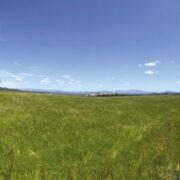
A photo of a giant Philippine bat recently took the internet by storm, shocking netizens.
Posted on Twitter, the image of a “human-sized” bat garnered over 103,000 retweets, over 260,000 likes and thousands of comments, as of this writing.
“Remember when I told y’all about the Philippines having human-sized bats? Yeah, this was what I was talking about,” the tweet from user @AlexJoestar622 said.
One of the netizens responded: “Hey, from the Philippines here. I can confirm this, they have a huge wingspan but the bodies are not really that big, more or less like the same body as a medium (bit smaller) sized dog. And yeah they only eat fruits, guavas most particularly. They’re really gentle too.”
“There are smaller ones hanging around trees and sometimes under roof eaves of some houses back in the provinces, these bigger ones hang around taller trees (but we rarely see them), at least the ones near our old house but last time I saw one in person was almost five years ago,” the user said in another tweet.
This particular type of bat, a flying fox, is the largest of its kind found in the world. Despite the “human-sized” claims, the bat is not as big as the viral image makes it appear, a Popular Mechanics post said. The bat can have a wing span up to 5.5 feet, but its body grows about a foot in height.
Another netizen clarified that the 5.58 feet in height was describing the bat’s wingspan, not the height itself.
Likewise, the National Museum of the Philippines Bohol’s post of the second fossil tooth from the giant predatory shark known as Megalodon gained attention online.
“Today, we present to you a fossil tooth from the giant predatory shark Otodus megalodon (previously known as Carcharocles megalodon), though everyone may know it simply as #Megalodon,” the museum said in its Facebook post.
“This specimen was donated to your #NationalMuseumPH last May 28, 2020, and is the second O. megalodon specimen found in the town of Maribojoc,” it added.
The fossil was found by Christian Gio Bangalo in Barangay Handig, an inland barangay and an elevated part of Maribojoc in Bohol.
The megalodon is considered as the largest shark that ever lived in the world’s oceans, with its earliest fossils dating to 20 million years ago.
“So far in the Philippines, only the teeth are found. Like other sharks, most of their skeleton, except for their teeth, is made of not bone but cartilage (like our nose and ears), which doesn’t preserve well in the fossil record. Consequently, their bodies never become fossils, and almost all things we know about the animal (size, diet, etc.) are based from their teeth,” the museum said.




